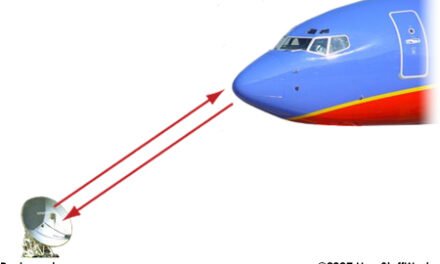Electric propulsion systems are gaining prominence in aerospace applications due to their potential to improve sustainability, reduce operating costs, and enable innovative aircraft designs. However, while promising, they also face significant technical and operational challenges. Below is a detailed analysis of their advantages and challenges:
Advantages of Electric Propulsion Systems
1. Environmental Benefits
- Zero Emissions:
- Fully electric propulsion eliminates CO₂ and other greenhouse gas emissions during operation.
- Supports aviation’s net-zero emissions goals.
- Reduced Noise Pollution:
- Electric motors are significantly quieter than conventional jet engines, making them ideal for urban air mobility (UAM) and noise-sensitive areas.
- Energy Efficiency:
- Electric motors achieve higher energy conversion efficiency (90–95%) compared to internal combustion engines (30–40%).
2. Cost Advantages
- Lower Operating Costs:
- Reduced fuel expenses as electric propulsion relies on electricity rather than costly aviation fuel.
- Simpler Maintenance:
- Fewer moving parts in electric motors result in lower maintenance requirements and costs.
- Energy Source Flexibility:
- Compatible with renewable energy sources like solar and wind, reducing dependency on fossil fuels.
3. Design and Performance Flexibility
- Distributed Propulsion:
- Multiple smaller electric motors distributed across the airframe enhance lift and control.
- Example: NASA’s X-57 Maxwell with distributed electric propulsion.
- Innovative Aircraft Configurations:
- Facilitates novel designs like blended-wing bodies or vertical takeoff and landing (VTOL) aircraft.
- Scalability:
- Applicable to diverse aircraft types, from drones and eVTOLs to regional commuter planes.
4. Enhanced Safety and Redundancy
- System Redundancy:
- Distributed propulsion systems allow for continued operation even if one or more motors fail.
- Immediate Torque:
- Electric motors provide instant torque, improving responsiveness and control.
Challenges of Electric Propulsion Systems
1. Energy Storage Limitations
- Battery Energy Density:
- Current battery technologies (e.g., lithium-ion) have significantly lower energy density compared to jet fuel (~1 MJ/kg for batteries vs. ~43 MJ/kg for jet fuel).
- Limits range and payload capacity of electric aircraft.
- Weight and Size:
- Batteries are heavy and bulky, which reduces the aircraft’s overall efficiency and capacity.
- Charging Infrastructure:
- Airports require high-capacity charging systems, which necessitate significant investment and time to develop.
2. Range and Payload Constraints
- Limited Range:
- Fully electric aircraft are currently feasible only for short-haul and regional routes (~300–500 miles).
- Long-haul flights remain impractical due to energy storage constraints.
- Payload Restrictions:
- Higher battery weight reduces payload capacity, affecting cargo and passenger numbers.
3. Thermal Management
- Heat Generation:
- Electric motors and batteries generate significant heat, which must be managed to ensure safety and efficiency.
- Cooling Systems:
- Adding cooling systems increases weight and complexity.
4. Infrastructure and Operational Challenges
- Airport Adaptation:
- Airports need to develop charging stations, grid connections, and energy storage solutions.
- Grid Dependency:
- The aviation industry’s transition to electric propulsion could strain existing electrical grids, especially in regions with high air traffic.
- Renewable Energy Integration:
- Ensuring the electricity used is generated from renewable sources is critical to achieving sustainability benefits.
5. Certification and Regulatory Hurdles
- New Standards:
- Certification processes must adapt to account for electric propulsion systems’ unique characteristics.
- Safety Validation:
- Ensuring safety and reliability of new technologies requires extensive testing and validation.
6. Economic Viability
- High Development Costs:
- Significant investment is required for R&D, infrastructure, and scaling production.
- Cost Competitiveness:
- While operational costs are lower, high upfront costs may hinder widespread adoption initially.
7. Technological Maturity
- Battery Lifecycle:
- Short battery lifespans and degradation over time increase replacement and recycling costs.
- Energy Density Advancements:
- Progress in battery technology, such as solid-state batteries, is needed to make electric propulsion systems practical for larger aircraft.
Emerging Solutions and Mitigations
- Battery Innovations:
- Development of solid-state, lithium-sulfur, and lithium-air batteries to improve energy density and safety.
- Hybrid-Electric Systems:
- Combining electric motors with conventional engines for extended range and reduced emissions.
- Example: Airbus’ E-Fan X program (now discontinued but influential in hybrid research).
- Advanced Materials:
- Lightweight composite materials reduce aircraft weight, improving efficiency.
- Infrastructure Investment:
- Governments and private entities are investing in airport electrification and renewable energy integration.
Use Cases of Electric Propulsion in Aerospace
- Urban Air Mobility (UAM):
- eVTOL aircraft for urban and regional transport.
- Example: Joby Aviation, Lilium.
- Regional Commuter Aircraft:
- Small electric planes for short-haul flights.
- Example: Eviation’s Alice.
- Drones:
- Electric propulsion is widely used in drones for delivery, surveillance, and agriculture.
- Research and Training:
- Electric aircraft are being used as testbeds for developing new aviation technologies.
Future Outlook
- Technology Roadmap:
- Achieving long-haul electric flights depends on advancements in energy storage, propulsion efficiency, and aircraft design.
- Policy Support:
- Governments and international organizations are incentivizing research and adoption through subsidies and regulatory frameworks.
- Integration with Sustainable Aviation Fuels (SAFs):
- SAFs may bridge the gap for long-haul flights until electric systems mature.
Conclusion
Electric propulsion systems represent a promising step toward sustainable aviation, offering significant environmental, operational, and economic benefits. However, realizing their full potential requires overcoming technical, regulatory, and infrastructure challenges. Continued innovation, collaboration among stakeholders, and supportive policies will be essential to integrating electric propulsion into the broader aviation ecosystem, paving the way for a cleaner, quieter, and more efficient future.
Hashtags
#ElectricPropulsionTech #AerospaceElectrification #SustainablePropulsion #ElectricAviationSystems #GreenAerospaceInnovation #EcoFriendlyAviation #ZeroEmissionFlight #FuelEfficiencyInAviation #QuietAircraftTech #CostEfficientPropulsion #ElectricFlightChallenges #BatteryTechForAviation #EnergyDensityLimits #WeightAndPayloadIssues #InfrastructureForElectricAviation #AdvancedElectricPropulsion #NextGenFlightTech #SmartElectricEngines













